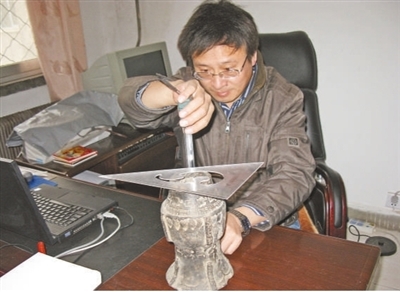The rise of central China opens a new chapter | One piece of land is the foundation for China's rice bowl
Shangqiu City, Henan Province is known as the "granary of eastern Henan", and its wheat planting area has remained stable at 9.36 million mu throughout the year.
Li Daojie, a large grain grower in Liangyuan District, Shangqiu City, Henan Province, told reporters that according to preliminary estimates by agricultural experts, it should be no problem to produce 1,200 kilograms per mu. "I am quite satisfied with this yield this year."
In Yuncheng City, Shanxi Province, the "granary of southern Shanxi", wheat has entered the critical period of drying.
Wang Cheng, a villager from Dongshandi Village, Jiang County, Yuncheng City, Shanxi Province, planted more than 140 mu of wheat and harvested more than 150,000 kilograms in the past two days. He said, "The quality of wheat this year is quite good."
On June 10, farmers in Shengqiao Town, Changning City, Hunan Province, were transplanting rice seedlings.
"A good harvest in summer means a stable year." During the "three summers", Henan, Shanxi and other places are welcoming the wheat harvest, while Hunan and Hubei are busy planting rice.
In the military farm of Yangxin County, Hubei Province, 9-inch tray transplanters were used to shuttle through the rice fields, but this year they are replaced with 7-inch tray transplanters. Compared with the 9-inch tray transplanter, the row spacing of its seedling spreading platform and transplanting arm is reduced by 5 cm, and the row spacing of transplanted seedlings is also reduced by 5 cm. Don't underestimate these 5 cm. Zhu Xiaomao, a farmer at the military farm of Yangxin County, said that this can increase the number of basic seedlings per mu of rice field by more than 4,000 holes, and increase the yield by 200 to 300 kilograms.
The 7-inch tray machine transplanting pilot field is a high-standard farmland newly built in Yangxin County in recent years. The local government has leveled and merged the scattered and fragmented farmland in the area, which is conducive to mechanized farming and easy to manage. At the same time, water channels have been built to provide water for rice growth in a timely manner. With the combination of new technologies and high-standard farmland, the per-acre yield is expected to increase by 10% compared with last year.
On May 29, at the Laowangpo high-standard farmland in Xiping County, Zhumadian City, Henan Province, local grain growers and agricultural machinery cooperatives held a wheat harvesting ceremony. This is a machine harvesting team harvesting wheat.
Storing grain in the ground lays a solid foundation for a good harvest. In recent years, the area of high-standard farmland construction in central provinces has steadily increased.
Yu Xin'an, director of the Henan Central Plains Innovation and Development Research Institute, introduced that Henan strictly implements the farmland protection system to ensure that the grain planting area remains stable at more than 161 million mu, and gradually builds more than half of the farmland into high-standard farmland.
Zhang Yingchun, member of the Standing Committee of the Hunan Provincial Party Committee and Executive Vice Governor, said, "This year we will transform 3.16 million mu of high-standard farmland to ensure that Hunan's 48 million mu of permanent basic farmland can be built into high-standard farmland."
At Yuelu Mountain Seed Industry Innovation Center in Changsha, Hunan, Li Le, a researcher at the Molecular Breeding Laboratory, is putting shelled rice seeds into a sample tray, and then placing the sample on a fully automatic liquid transfer workstation to extract the sample DNA. The sample is a low-cadmium rice seed from a field trial, which is a variety selected and bred by Yuelu Mountain Seed Industry Innovation Center on behalf of a seed company.
Li Le introduced that compared with conventional breeding, molecular breeding is more precise and accurate. It can be applied not only to food crops such as rice, corn, and wheat, but also to economic crops such as rapeseed, peanuts, and soybeans.
This is a seed sample taken on May 31 at the Shennong Seed Industry Laboratory of the National Biobreeding Industry Innovation Center in Zhongyuan Agricultural Valley, Xinxiang, Henan Province. Photo by reporter Liu Lihang
Seeds are the "chips" of agriculture. The Shennong Seed Laboratory in Zhongyuan Agricultural Valley, Xinxiang, Henan Province, is committed to solving the "bottleneck" problem in the field of biological breeding. Last year, a research project on peanuts in the laboratory won the special prize of Henan Science and Technology Progress Award.
It is understood that the project focuses on the major industrial demand of increasing the oil production per unit area of peanuts, systematically analyzes the genetic mechanism of peanut fat content, and cultivates two high-oil varieties: Yuhua 9326 and Yuhua 47. "It effectively aggregates the characteristics of high yield, high oil, early maturity and large fruit." Han Suoyi, a researcher at Shennong Seed Industry Laboratory, told reporters.
The central region has grasped the "bull's nose" of seed industry revitalization, and is working hard to "improve the quality of the granary" while "enriching the granary".
Ru Zhengang, a professor at Henan University of Science and Technology, said, "New varieties are the key carrier to help improve the quality and efficiency of agricultural production. Seeds are related to the initiative of food security and the good life of the people. We must strengthen the research on improved seed technology and use Chinese seeds to ensure China's food security."
On May 27, 2024, farmers in Letu Town, Mengcheng County, Anhui Province drove agricultural machinery to harvest wheat.
The people hope for a well-stocked granary. As an important grain production base in my country, the central region has vigorously promoted the storage of grain in the land and technology, implemented a new round of grain production capacity improvement actions, and used about a quarter of the country's arable land to produce nearly one-third of the country's grain. The annual total output is stable at around 400 billion jin. The foundation of the "great granary" is more solid, and the "Chinese rice bowl" is more confident.



